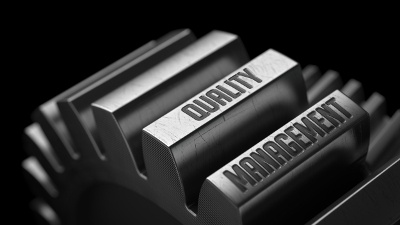Best in Manufacturing – December 17, 2017
Each Sunday, we publish a list of top articles and other content related to manufacturing in areas like quality control, product development, supply chain management, sourcing, auditing and law.
1. 4 essential keys to managing Chinese supply chains
The supply chains in China have become some of the most important in the world. In 2016, China exported a staggering $1.99 trillion worth of goods – the most of any country globally. But for foreign companies doing business with China, managing their supply chains there can sometimes present hassles and headaches.
 Thankfully, this comprehensive featured article mentions advice to consider to more effectively manage your Chinese supply chains:
Thankfully, this comprehensive featured article mentions advice to consider to more effectively manage your Chinese supply chains:
- Execute an effective supplier qualification process: how thoroughly do you evaluate suppliers? Do you just look at their final product or also judge a supplier based on its management and processes?
- Use contracts to align expectations: are your standards (e.g. for quality, lead times, etc.) formalized? Have you specified the right for impartial quality control or your own team to hold suppliers accountable for defects? Do you have penalties for delayed shipments? Don’t assume suppliers will adhere to what’s said during verbal negotiations. Contracts allow you and a supplier to reference and confirm standards for orders.
- Refine your supply chain management processes: the management processes that work in Mexico, Vietnam, South Korea or some other country might not work in China. It might be necessary “to exercise routine mentoring and monitoring of supplier performance” to ensure your supplier stays on track to meet your needs.
- Continually test and adjust your supplier base: relying on one supplier for all your needs might make you overlook all the other suppliers in the market that are competitive. If you constantly look for new suppliers and compare them against your current ones, you can maybe find better pricing and quality.
There are many skills you’ll need to be a successful importer. One such skill, when importing from China, is knowing how to adapt business processes and managerial approaches to the environment there. And with this featured article, you can get an idea of how to do just that.
To read the full version of this featured article, follow the link below:
Managing Supply Chains in China: Four Steps to Success - W. Michael Corkran, Supply Chain Quarterly
2. The future of space manufacturing
As of 2011, it cost $30,000 to put one pound of payload into Earth’s orbit. While the data is about 10 years old, it still makes an important point: it’s expensive to go to space.
But what if instead of loading a giant rocket to take items to outer space, those items could actually be made in space?
This featured article references NASA’s “Tipping Point Technologies” program, which aims to manufacture objects in space and stimulate the commercial space industry (among other objectives).
Not everything can be made in space, though. Complicated parts like “processors, traveling wave tubes, high performance microelectric chips” and more would still need skilled manufacturers to create them, at least for the time being.
Technologies like TALISMAN (see #2) and self-healing materials in addition to programs like those above are pushing the boundaries of both manufacturing and mankind. And personally, I’m very excited to see how they could all affect Elon Musk’s plan for a colony on Mars. Isn’t the future exciting?
To read more about space manufacturing, check out the featured article in the link below:
In-Space Manufacturing and Assembly: A Different Kind of Future - Brooks McKinney, Northrop Grumman
3. Are you familiar with these aspects of quality management?
Manufacturing a high quality product is easier said than done. There is so much to understand behind the word “quality”, like grasping acceptable quality levels (AQL), Six Sigma, the key stages to limiting defects and more.
In addition to these considerations, this featured article lists a few areas of quality management that the author feels are so important you “can’t live without them”:

- Document control: this process standardizes official documents within your team. Can you imagine if two people wrote two separate and wildly different quality specifications for an item? Only chaos would ensue. Keeping everyone on the same page requires controlling documents.
- Nonconformance management: if a product problem is discovered, how is it conveyed and addressed? Who takes responsibility for fixing it? If the issue is simply noticed and forgotten, without any follow up, it could reoccur in future production runs.
- Change management: implementing changes can waste an organization’s time and result in inefficiencies if not managed properly.
- And more!
As broad of a topic as quality is, this article breaks it down into a few important pieces. And while it doesn’t cover everything related to quality, it can get you thinking about the areas of quality you may (or may not) be addressing.
To read the full article about quality management, follow the link below:
The Ten Quality Processes You Can’t Live without - Alexa Sussman, Quality Digest
4. Becoming an agile manufacturer
Customization is both a major opportunity and a challenge for the manufacturing industry.
Customers increasingly crave merchandise that fits their desires more accurately. While current technologies like 3D printing offer ways to extensively customize products, these innovations haven’t yet reached the point of being able to meet supply demands.
The next best alternative to completely customized goods is small batches of products that sell well with niches of customers. Even providing niche products can prove difficult in factories due to issues like changeover times and high batch wastage.
But this is where agile manufacturing comes into play.
Agile manufacturing helps manufacturers respond quickly to customer demands by producing what they want very quickly. Imagine, for example, that there’s a trend in the city near you to buy green bracelets. Then one month later, the next craze is red and blue sunglasses. An agile company can respond to these opportunities quickly and make a profit before anyone else can even begin manufacturing.
This featured article mentions a few agile manufacturing suggestions:
- Utilizing “at-the-nozzle” mixing products that are made closer to a dispense nozzle will reduce changeover time and result in less product waste
- Having a robot system paired with vision systems and intelligent decision making algorithms, robots can accelerate production
- Installing linear motor platforms, enabling flexible movements and motion control on your production line
If you combine these suggestions (along with the rest mentioned in the article) with Lean manufacturing principles, you’ll be on your way to becoming a super manufacturer.
Read this article to get ideas to make your manufacturing more agile:
Make Your Tail of SKUs a Seamless Part of Operations - Steve Clarke, Global Manufacturing
5. “Play nice” with your Chinese factory or be aggressive, that is the question
Do you like getting swindled in a business transaction?
I’d imagine not.
Yet when a Chinese factory boss thinks they have the upper hand, that’s exactly what might happen. And that’s why this featured article suggests something infrequently heard: not “playing nice” with your Chinese factory.
Of course, you can’t be an outright jerk. But what the article gets at is that factory bosses have thick skin, and no matter what you do, you can’t offend them. Being blunt might be best to foster respect than to prostrate yourself before factory management.
If you don’t set boundaries and establish yourself as someone to be respected in the supplier-client relationship, you risk working with someone that will:
- Make bold moves without authorization
- Adjust pricing to show power
- Not respond to calls for action
Do you have any stories of your own that confirm or disprove of what’s mentioned above?
Be sure to read the full article that covers not “playing nice” with a Chinese supplier by following the link below:
Are You Going too Easy on Your Chinese Factory? - Renaud Anjoran, China Manufacturing Consultants
We’re constantly scanning the web for top manufacturing stories and news. If you’d like to submit an article for consideration for our weekly Best in Manufacturing, send us a message and let us know.







